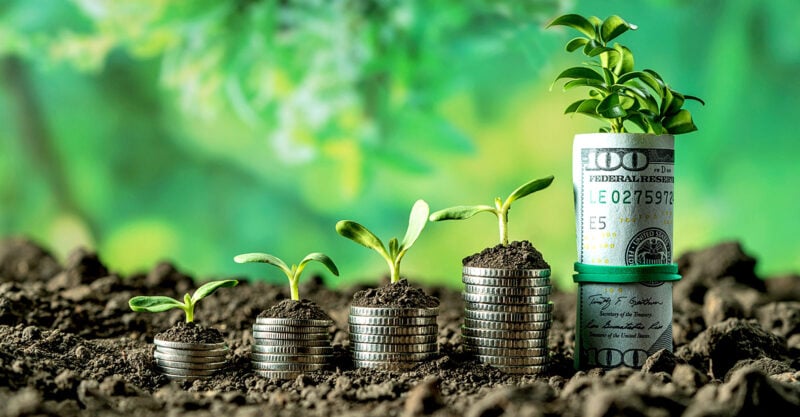by Michael Nevradakis, Ph.D., Childrens Health Defense:
 Proponents of carbon farming tout a host of benefits, including meeting climate goals — but critics warn it’s just another greenwashing tactic that benefits Big Business and hurts small farmers.
Proponents of carbon farming tout a host of benefits, including meeting climate goals — but critics warn it’s just another greenwashing tactic that benefits Big Business and hurts small farmers.
President Joe Biden has referred to soil as “the next frontier for storing carbon,” and some lawmakers and business leaders have described carbon as a new “commodity crop.”
TRUTH LIVES on at https://sgtreport.tv/
Combine the two — soil and carbon — and you get “carbon farming” — a practice its proponents say could help reduce carbon in the atmosphere and achieve climate-related targets.
DGB Group, a developer of large-scale carbon and biodiversity projects, defines carbon farming as “an agricultural method that captures atmospheric carbon, storing it in the soil, through land management practices, such as regenerative agriculture and reforestation.”
According to DGB Group, which is a subsidiary of a publicly held Netherlands-based holding company that acquires businesses in the energy, agricultural and animal sectors, carbon farming “helps to increase the resilience of natural systems, promote biodiversity, and mitigate the impacts of a changing climate.”
Some believe carbon farming also is a potential revenue stream for farmers and ranchers that’s gaining popularity among large corporations — including Apple, BP, Cargill, Facebook, General Mills, Google, McDonald’s, Microsoft and Target — which buy carbon credits from farmers to offset their emissions.
But critics say there is little evidence carbon farming works as well as promised, and that it’s unclear whether the practices can be carried out over long periods and on a massive scale without undercutting food production.
They also argue the programs can create opportunities for “gamesmanship and greenwashing that undermine real progress on climate change,” turning the programs into “big business” for “big polluters.”
In an interview with The Defender, Claire Robinson, managing editor of GMWatch, said:
“Carbon farming is yet another way that agribusiness corporations are gaining control over land and farmers.
“Big seed and agrochemical companies like Bayer are taking over land and instructing farmers to plant trees or adopt certain practices dictated by the company, in the name of sequestering carbon, so that the company can profit from selling ‘carbon credits’ on the international market.
“In reality, ‘carbon farming’ is a greenwashing exercise that is driven by corporate control of the food and agriculture systems.”
Souparna Lahiri, senior climate and biodiversity policy adviser for the Global Forest Coalition, also told The Defender he believes corporations are taking advantage of carbon farming programs:
“We have examples in the U.S. where agribusiness companies like Cargill have brought landowners under carbon-farming schemes … promising them money in lieu of those carbon credits. These carbon credits are then used by them to offset their emissions.
“So, it is an offset scheme and does not contribute to emission reduction … Many of these are pilot projects. But, it’s happening.”
Carbon farming and climate goals
Climate change activists and proponents of carbon farming, including Bill Gates, argue that the agriculture, forestry and land use sector is “responsible for 24 percent of all greenhouse gas emissions — just one percentage point less than electricity,” and that
“More than one-third of earth’s ice-free surface is devoted to agriculture.”
According to Deutsche Welle, “Soils are vital carbon stores, but industrial farming, rather than absorbing CO2, often releases it into the atmosphere — for example through plowing which … can result in the degradation of the soil.”
As a result, the agriculture industry is being asked to help meet climate goals.
Supporters argue soil can act as a “vast carbon sink,” a “carbon sponge” or a “bank account” from which carbon can be “withdrawn” — or “deposited.”
“With the right methods, carbon can be sequestered long-term in soils — for decades, centuries or more,” according to the Pesticide Action Network, with “carbon sequestration” referring to “the practice of capturing carbon and preventing it from being released back into the atmosphere as carbon dioxide.”
Carbon farming methods include a range of “low-tech” practices, including growing perennial crops that grow year after year without any human disturbance to the soil, agroforestry, which includes the integration of trees and shrubs into annual crop production and “no-till systems,” which focus on alternatives to using plows, which disturb the soil.
Other methods include livestock rotation to avoid overgrazing; the use of biochar, which “enhances soil’s ability to retain nutrients, water, and increase carbon levels”; preserving grasslands, restoring and rewetting peatlands, planting crops with deep root systems, and letting plant materials accumulate and slowly decompose in the soil.
Proponents argue carbon farming methods improve soil health, protect against erosion, improve biodiversity, and helping farmers earn extra income, hire local employees and purchase new machinery.
According to The Counter, “Soils high in organic matter tend to be good soils: They are more resistant to drought, less prone to erosion, harbor more beneficial soil organisms, and are generally better at growing healthy crops with fewer synthetic inputs,” adding that “building soil carbon now looks like a key to planetary survival.”
Small farmers bear the cost
According to Carbon Market Watch, “the cost of monitoring, verifying and reporting [carbon capture] is extremely expensive and comes with huge uncertainties,” including challenges tracking potential carbon leaks.
Even Rabobank’s study notes that to achieve the sequestering of 3.6 metric tons of carbon per hectare annually, farmers will have to make “significant investments” in changing their farming practices, including hiring experts to perform soil analyses.
Read More @ ChildrensHealthDefense.org



